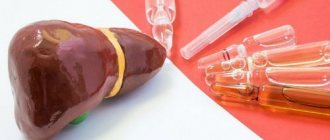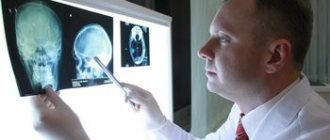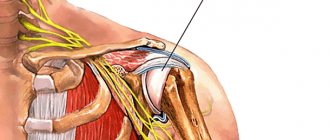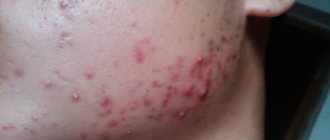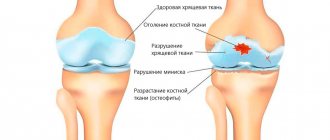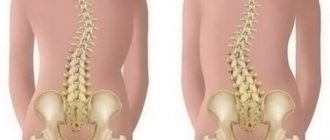Useful articles
Publication date:
Hepatic encephalopathy (HE) refers to pathological conditions requiring specialized medical care. Patients with the last stage (coma) require intensive care conditions. Problems arise against the background of toxic damage to the brain from toxic substances. With alcohol addiction, this type of pathology develops quite rarely, but it can be difficult to recover from it, and very often it is impossible.
Symptoms of hepatic encephalopathy (hepatoencephalopathy) are accompanied by other manifestations of chronic alcoholism:
- personality degradation with severe impairment of intellectual abilities;
- depressive disorders;
- pathology of the peripheral nervous system;
- enzymatic-endocrine disruptions.
Diagnosis and treatment of this disease is carried out only in a hospital setting. Statistically, there is a fatal outcome in 80% of acute cases, and with late assistance. Chronic variants are more favorable for life, although they lead to limitations and disability.
Causes of hepatoencephalopathy in alcohol dependence
The basis of brain disorders in this disease is liver failure against the background of hepatitis caused by alcohol. Ethanol has a direct damaging effect on liver cells. Hepatocytes are destroyed and cease to perform a number of their basic functions. The acute process is especially dangerous when drinking large quantities of alcoholic beverages.
Malfunction of the liver leads to:
- accumulation of toxins selectively acting on neurons;
- changes in the acid-base properties of blood, hemostasis;
- deviations in the values of oncotic (created by plasma proteins) and hydrostatic pressure;
- disturbance of the electrolyte and water balance of the body.
These pathological processes cause inhibition of the function of astrocytes - cells that act as a natural defense between the tissues of the nervous system and blood.
As a result of the destruction of hepatocytes and astrocytes in the central and peripheral nervous system:
- Unneutralized poisons accumulate;
- electrolyte imbalance occurs;
- a malfunction of neurotransmitters—impulse transmitters—is formed;
- the production of cerebrospinal fluid (CSF) increases sharply, leading to a pronounced increase in intracranial pressure;
- There are increasing signs of cerebral edema.
The following has a particularly destructive effect on nervous tissue:
- ammonia;
- the appearance of false neurotransmitters - substances that replace the main mediators of the nervous system, which leads to insufficient functions of the latter;
- some types of fatty acids and amino acids.
Forecast and prevention of the disease
The prognosis for the development of the disease, although it depends on a whole range of factors, is almost always negative. The survival rate of patients is higher if the disease develops against the background of chronic liver pathologies. In cirrhosis, the prognosis is seriously worsened in the presence of jaundice and ascites.
In acute liver failure, the prognosis for the development of the disease worsens in children under 10 years of age and adults after 40 years of age due to viral infection. The mortality rate in the first two stages reaches 30%, and in the last stages it exceeds 80%.
Prevention comes down to normalizing lifestyle, avoiding excessive use of medications and timely treatment of diseases that provoke the development of encephalopathy.
Due to the fact that the lethality of the disease directly depends on the stage of its development, timely detection of the disease is of great importance. To do this, it is important, at the slightest suspicion of the presence of the disease, to seek advice from a specialist, as well as to do a CT and MRI. You can undergo diagnostics at one of the clinics located in the service database. The site has collected information about hundreds of diagnostic clinics. A consultant is ready to help you choose a clinic over the phone and make an appointment for a convenient date.
Course, complaints and symptoms of hepatic encephalopathy in alcoholism
PE can occur in acute and chronic forms. The first develops over several hours or days. The second option is characterized by a slow course, sometimes lasting more than one year.
Stages of hepatic encephalopathy:
- Initial changes (compensation). Patients report sleep disorders, increased unmotivated irritability, attacks of apathy, and general loss of strength. Upon examination, the doctor determines the yellowness of the mucous membranes, and less often - the skin.
- Clinical manifestations (subcompensation). Mental problems are getting worse. They are accompanied by pronounced aggressiveness. Muscle (flapping) twitching during tension is detected - asterixis. The amplitude of these painful movements is wide and is observed both in the limbs and in the muscles of the neck and torso. Damage to the thermoregulation center results in periodic and unreasonable increases and decreases in temperature. There are violations of intellectual abilities. The patient becomes forgetful, cannot read and write, looks around him absent-mindedly and uncertainly. During certain periods, gaze fixation is observed. A specific sweetish (liver) odor emanating from the patient indicates a metabolic disorder.
- Terminal (decompensation). In this phase of the disease, disturbances of consciousness develop. Among the main symptoms is disorientation, the aggressiveness of which gradually reaches a soporous status. It is characterized by suppression of conscious functions, but preservation of reflexes. As a result of stupor, coma is formed - a completely unconscious state with complete inhibition of the reflex activity of the body, which is preceded by a convulsive syndrome. It is at this moment that most patients die.
Total information
Liver pathology is extremely rarely complicated by hepatic encephalopathy. However, if the disease is nevertheless detected, its outcome is almost always tragic: for 2/3 of those affected, encephalopathy ends in death. Chronic liver diseases are more often complicated by hepatic encephalopathy than acute ones. They are potentially reversible, but significantly affect the patient’s ability to work and lifestyle.
Modern medical science does not yet have a clear idea of the causes of the development of the disease, but recent research allows us to hope for a solution to this problem in the near future. Discovering the mechanisms of the disease will contribute to the development of an effective treatment plan that will not only reduce the number of deaths, but will significantly improve the quality of life of those affected.
Diagnosis of hepatoencephalopathy
If the damage to the liver and brain is alcoholic, the doctor is interested in:
- symptomatic picture;
- establishing the severity of the disease;
- stage of the process.
Based on the data obtained, during a survey and examination, the doctor prescribes additional types of diagnosis of hepatic ecephalopathy.
These include:
- A detailed clinical blood test with determination of the content of erythrocytes, leukocytes, hemoglobin, platelets.
- Biochemistry data with liver tests, bilirubin, alkaline phosphatase, gamma globulin transferase.
- Ultrasound of the parenchymal organs of the abdominal cavity. The specialist is especially interested in the condition of the liver, pancreas, and kidneys.
- Computed tomography is the most informative method of x-ray diagnostics.
- MRI in doubtful cases, as an additional diagnostic method.
- Needle biopsy as the most accurate option for differential diagnosis.
What causes hepatic encephalopathy
The appearance of hepatic encephalopathy indicates a further unfavorable prognosis for the course of the underlying disease. Encephalopathy develops in patients with chronic liver failure. The course of hepatic encephalopathy can be acute, subacute or chronic.
Most often, hepatic encephalopathy is latent, that is, “hidden” in nature, and therefore it is not easy to diagnose. Even the patient himself may not be aware of the development of this condition.
The most common causes of hepatic encephalopathy are:
- alcoholic cirrhosis of the liver;
- viral hepatitis "" and "".
Hepatic encephalopathy develops in the later stages of liver disease: this is due to the fact that vascular anastomoses develop, that is, alternative blood circulation routes due to increased pressure in the portal vein, which occurs with cirrhosis of the liver. When these anastomoses appear, blood from the portal vein, bypassing the liver, enters the systemic circulation.
All potentially toxic substances that are normally neutralized in the liver (such as ammonia and mercaptans) enter the bloodstream and reach the brain and have a damaging effect on it. If hepatocytes (liver cells) are damaged, they are not able to filter and neutralize harmful substances that enter the liver through the bloodstream, so these toxic substances enter the brain through the bloodstream.
With normal liver function, encephalopathy is rare, and in this case it is caused precisely by the development of anastomoses.
Treatment of hepatic encephalopathy caused by alcohol intoxication
Therapy for PE is quite complex. The correct choice of treatment tactics is based on identifying and eliminating the main cause of the pathology, the form and stage of the disease.
The general therapeutic course includes:
- Diet therapy - food intake with protein restriction to the level of 1 gram per kilogram of the patient’s weight per day, limiting table salt.
- Measures to cleanse the intestines - enemas twice a day, preparations containing lactulose, ornithine and zinc sulfate (to remove toxic ammonia due to the onset of an interaction reaction).
- Antimicrobial therapy - injections of broad-spectrum antibiotics, as well as drugs that prevent the development of bacteria in the intestines.
- Medicines that suppress mental arousal processes. For this purpose, the use of haloperidol is recommended. Tranquilizers, especially those from the benzodiazepine group, are not indicated due to the risk of possible complications.
In case of development of acute hepatic coma caused by ethanol poisoning, the treatment regimen is supplemented with specific therapy.
It additionally includes:
- prescription of diuretics (combat cerebral edema);
- stopping bleeding;
- relief of manifestations of aspiration pneumonia (complication);
- elimination of symptoms of pancreatitis.
All measures to cure PE must be carried out in intensive care. A positive prognosis can only be discussed in the case of a chronic form of the disease. The survival rate of patients with concomitant liver cirrhosis is an order of magnitude lower. The final outcome of the acute form depends on the stage at which resuscitation measures are started. In the early phase, survival rate is about 35%. The terminal option is the saddest. Almost 80% of patients die. Prevention of hepatic encephalopathy caused by alcohol abuse is to maintain a sober lifestyle.
The text was checked by expert doctors: Head of the socio-psychological service of the Alkoklinik MC, psychologist Yu.P. Baranova, L.A. Serova, a psychiatrist-narcologist.
CAN'T FIND THE ANSWER?
Consult a specialist
Or call: +7 (495) 798-30-80
Call! We work around the clock!
Therapy
Therapy for this disease is a complex process that requires as quickly as possible clarification of the causes of its occurrence. The course of treatment includes: diet therapy, bowel cleansing, lowering nitrogen levels and symptomatic therapy.
It is necessary to reduce the amount of protein coming from food. It is necessary to adhere to this diet for a long time, since an increase in the amount of protein in the diet of a cured patient can provoke a relapse of the disease.
To speed up the excretion of ammonia in feces, it is necessary to achieve at least two bowel movements per day. For this purpose, cleansing enemas are used.
Antibacterial therapy involves taking antimicrobial drugs, the action of which is especially effective in the intestinal lumen (vancomycin, metronidazole, neomycin).
To achieve a sedative effect, benzodiazepine drugs are used, with preference given to haloperidol.
Read also
Perinatal encephalopathy
Perinatal encephalopathy is a frequently encountered concept in the practice of pediatricians and pediatric neurologists!
What it is? Literally, “perinatal encephalopathy” means “damage to the brain in the perinatal… Read more
Neuralgia
Neuralgia is a disease that is a lesion of the peripheral nerve. It manifests itself as a strong, burning, acute pain that is felt in the area of innervation of the affected (along) nerve. Kinds…
More details
Rehabilitation after stroke
It is very important to begin rehabilitation after a stroke as early as possible, since further recovery and the ability to avoid disability depend on this. For rehabilitation after a stroke in the clinic “First...
More details
Myositis
Myositis is a group of diseases characterized by an inflammatory process in skeletal muscles. Depending on the cause of the disease, there are several forms of myositis: Autoimmune…
More details
Arnold-Chiari malformation
Due to the availability of the study and the high resolution of MRI, we quite often come across the conclusion - Arnold-Chiari anomaly. What is meant by this concept? Arnold-Chiari malformation...
More details
Treatment
Therapy is carried out only in inpatient settings, patients are assigned to the intensive care unit. Treatment for hepatic encephalopathy depends on the intensity of its symptoms. However, the main goal of treatment procedures is to normalize liver function and eliminate the toxic effects of ammonia on the brain.
An integrated approach to treatment involves organizing:
- symptomatic treatment;
- special low-protein nutrition;
- detoxification procedures;
- drug therapy.
The latter involves the use of medications, including those based on lactulose. It helps suppress the synthesis of ammonia in the intestines and remove its excess in feces, as well as inhibit the excessive growth of pathogenic intestinal microflora. Antibiotics are usually taken orally, as intravenous use places a high burden on the liver.
The use of antibacterial drugs helps to destroy harmful microorganisms in the intestines that produce ammonia.
Drugs are also prescribed to promote the normal breakdown of ammonia in the liver. Such drugs are administered intravenously in the maximum allowable dosage. Sorbents are prescribed to remove toxins from the intestines before they penetrate into the blood. To reduce the volume of acidic gastric juice produced, special medications are indicated.
Classification of hepatic encephalopathy
Doctors distinguish four stages of development of this serious condition:
- Stage I - characterized by the appearance of general weakness, headache, increased excitability, euphoria, tinnitus and flickering of “spots” before the eyes, frequent mood swings, impaired coordination of small movements, changes in handwriting, difficulty in performing simple mental tasks (for example, addition and subtraction).
- Stage II - apathy, melancholy, lethargy, drowsiness, aggressiveness, disorientation in time and space occur.
- Stage III - stupor, speech is difficult, severe confusion, stupor, presence of pathological reflexes.
- Stage IV - coma: consciousness is lost, the pupils are dilated and do not respond to light, reflexes disappear.
Hepatic encephalopathy. Differential diagnostic algorithm and management tactics
Despite the frequent development of encephalopathy in patients with liver cirrhosis, today there are no reliable laboratory methods for diagnosing and objectively assessing its severity. At the suggestion of some authors, a classification of PE was published, proposed in 1998 at a congress of specialists in this field. According to it, hepatic encephalopathy is divided into types: A (Acute) - associated with acute liver failure; B (Bypass) – associated with portosystemic blood shunting, liver disease is absent; C (Cirrohosis) – associated with liver cirrhosis, portal hypertension and portosystemic shunting. Clinical classification includes episodic, persistent and minimal HE. Most episodes of encephalopathy were detected during disease progression and prolonged precipitation of factors, but sometimes it accompanies decompensation of liver cirrhosis. HE with minimal manifestations either occurs at the onset of the disease or is considered as a subclinical form. In such patients, clinical symptoms of encephalopathy are revealed only with extremely detailed examination. Early signs of the disorder include a decrease in the number of spontaneous movements, a fixed gaze, and short responses. Personality changes are most noticeable in patients with chronic liver disease. These include childishness, irritability, and loss of interest in the family. Such personality changes can be detected even in a state of remission. Intellectual disorders vary in stages with minimal clinical manifestations and are manifested by mild disturbances in the organization of the mental process. Isolated disorders occur against the background of clear consciousness and are associated with a violation of optical-spatial activity: recognition of a spatial figure or stimulus. Writing disorders manifest themselves in the form of a violation of the outline of letters. To assess disease progression, patients can be screened sequentially using the Reitan Number Connection Test. Coma in acute liver failure is often accompanied by psychomotor agitation and cerebral edema; lethargy and drowsiness appear, which is a manifestation of damage to astrocytes. Issues of diagnosis, treatment, and management tactics for such patients will be discussed below. Minor signs of PE are observed in almost 70% of patients with liver cirrhosis. Symptoms are observed in 24–53% of patients who undergo portosystemic shunt surgery. With minimal PE, patients may have normal abilities in the areas of memory, language, and motor skills. However, sustained attention is impaired in patients with minimal PE. They may have a delay in reaction time, which precludes driving. As a rule, patients with minimal PE have changes in psychometric and neurophysiological tests: number binding test, evoked potentials, reaction time to light and sound. Patients with mild and moderate PE demonstrate a decrease in short-term memory and concentration during mental status tests. They may manifest themselves as signs of “flapping” tremor of the limbs, which is also observed in patients with uremia, pulmonary insufficiency, and barbiturate overdose. Patients may have a sweet, "liver-like" odor from their breath when exhaling mercaptans. Pathogenesis Currently, the most common pathogenetic model of PE is the “glia hypothesis”. Hepatocellular failure and/or portosystemic blood shunting lead to the development of amino acid imbalance and an increase in the content of endogenous neurotoxins in the blood. This causes swelling and functional disorders of astroglia: increased permeability of the blood-brain barrier (BBB), changes in the activity of ion channels, disruption of neurotransmission processes and the supply of ATP energy to neurons, which is clinically manifested by symptoms of PE (Fig. 1). Clinical picture In PE, all parts of the brain are affected, so the clinical picture is a complex of different syndromes. It includes neurological and mental disorders: – personality changes (childishness, irritability, loss of interest in the family); – disturbance of consciousness with sleep disorder (inversion of the normal rhythm of sleep and wakefulness, fixed gaze, lethargy and apathy, short answers); – intellectual disorder (slowness of speech, monotony of voice, disturbances in optical-spatial activity, manifested in the test of connecting numbers, tracing letters); – “liver” odor from the mouth; – “flapping” tremor (asterixis). To substantiate the diagnosis of PE, a thorough history, physical examination and neurological examination are necessary. Thus, psychometric tests reveal an increase in completion time and number of errors; electroencephalography - slowing down the a-rhythm to 7-8 beats/s, evoked potentials of the brain - decreased amplitude and increased latent periods, magnetic resonance spectroscopy - increased intensity of the T1 signal, decreased myoinositol/creatine, increased glutamine peak. The sensitivity of these methods is 60–85, 40–50, 50–85, 100%, respectively. The diagnosis of PE can be assumed when signs of chronic liver disease are detected (telangiectasia, palmar erythema, gynecomastia, ascites, jaundice, bleeding from varicose veins). And in patients with cirrhosis, it is recommended to initially regard alterations in mental status as PE until a different etiology of the changes is proven. Table 1 shows the West–Haven method for assessing the severity of PE. Hepatic stars or tremors are characteristic of the early stages of the disease, but they are not pathognomonic, nor are uremia, carbon dioxide narcotic state, hypomagnesemia, and diphenylhydantoin intoxication. Patients with encephalopathy often exhibit a liver odor and hyperventilation. Laboratory tests in patients with PE often reveal signs of severe biochemical disorders and synthetic liver dysfunction. Other studies are also necessary, including an electroencephalogram. Evoked potentials and psychometric testing may be useful in differentiating PE from dementia, but their appropriateness is considered on a case-by-case basis. In order to exclude dysfunction of the nervous system due to other causes and to identify factors influencing the development of PE, along with instrumental studies of the brain, the following is often carried out: - study of arterial blood gases; - blood chemistry; – general urine and blood tests; – bacteriological examination of sputum and urine; – examination of urine and blood for poison content; – blood alcohol level test. In the presence of fever and leukocytosis in combination with PE, a lumbar puncture is necessary to exclude meningitis. The differential diagnosis of encephalopathy is presented in Table 2. Patient management tactics The most important direction in the management of PE is the constant search, identification and treatment of the causes of PE symptoms. Factors influencing the development of the disease are: • excess protein in food; • gastrointestinal bleeding; • infections (especially spontaneous bacterial peritonitis, urinary tract and skin infections, respiratory tract infections, bacteremia); • electrolyte imbalance, acidosis, dehydration; • condition after transjugular intrahepatic portosystemic shunting; • renal dysfunction; • hypoglycemia; • hypoxia; • hepatocellular carcinoma; • exacerbation of chronic active hepatitis against the background of cirrhosis; • drugs that relieve central nervous system stimulation (sedatives, hypnotics, etc.); • cerebral edema (in acute liver failure); • end-stage cirrhosis. Some liver diseases, such as chronic viral hepatitis, autoimmune hepatitis or acute alcoholic hepatitis, can cause HE during exacerbations in the absence of sufficient compensatory mechanisms. Thus, with the first episode of encephalopathy, the risk of developing hepatocellular carcinoma increases. In case of encephalopathy developing after TIPS, dietary protein intake and lactulose intake should be limited. In the absence of precipitation factors after a thorough search, most likely this encephalopathy is one of the manifestations of liver disease. It should be noted that the problem of encephalopathy can be solved with a liver transplant. Dietary recommendations Limiting protein in food has proven itself over many years of practice. However, for the stage with minimal manifestations, this is an exception, not a necessary condition. Protein consumption less than 40 g/day. lead to a negative nitrogen balance and the gradual development of depletion. Such disorders are aggravated by the large loss of protein during periodic paracentesis. Thus, it is recommended to limit the intake of protein from food mainly in case of negative dynamics. For patients with stage I and II encephalopathy, the recommended daily dose of protein is 30–40 g/day. Severe stage III or IV encephalopathy requires further protein restriction of 0 to 20 g daily during intensive care. However, after recovery, the daily amount of protein should be gradually increased in accordance with the neurological status of the patient. The main concept of therapy is to maintain a balance between correction of encephalopathy and prevention of wasting. In this case, the majority should be plant proteins due to the high fiber content and low amounts of aromatic amino acids. This diet is not recommended for long-term use. Thus, it is advisable to conduct a detailed conversation with the patient and his relatives to explain the need and methods of limiting protein in food. Combination therapy Lactulose (Duphalac) is a drug that is metabolized in the colon by saccharolytic bacteria (Bifidobacterium, Lactobacillus) to short-chain fatty acids, which leads to acidification of intestinal contents, inhibits the growth of proteolytic microflora (Clostridium, Enterobacter, Bacteroides) and thereby reduces production ammonia. In addition, lowering the pH in the large intestine leads to faster movement of intestinal contents, which reduces the time for ammonia formation and speeds up its elimination. The recommended dose of Duphalac is 30 ml orally 2-4 times a day. However, sensitivity to Duphalac is individual, as a result of which it is recommended to instruct patients on the need to independently titrate the dose of the drug until gradually achieving 3-5 semi-liquid stools per day. Unfortunately, the most common mistake made by doctors when treating encephalopathy is failure to inform patients about the correct use of Duphalac. Possible side effects of lactulose therapy when used in high doses include: a feeling of excessively sweet taste, risk of increased blood glucose in diabetic patients, bloating and flatulence. Oral lactulose is indicated for patients with stage I or II encephalopathy, and in case of severe encephalopathy or hepatic coma (stage III or IV), Duphalac should be administered through a nasogastric tube. Some clinics prefer enemas with Duphalac, as they are retained in the colon and colon, which allows you to increase the dose (enemas: 300 ml Duphalac plus 700 ml tap water) and avoid the risk of aspiration in patients, which increases in such situations. Despite the high effectiveness of this drug, its use in patients with severe encephalopathy requires careful monitoring. Lactulose is a non-adsorbable disaccharide. Duphalac interferes with intestinal ammonia synthesis through a number of mechanisms. The conversion of Duphalac into lactic acid is the result of its breakdown by saccharolytic bacteria. As a result, the intestinal contents are acidified, which promotes the conversion of NH3 to NH4+ and prevents the passage of NH3 from the intestine back into the blood. In addition, the growth of E. coli bacteria is inhibited, resulting in increased levels of lactobacilli (Figure 2). The initial dose of Duphalac is 90–120 ml/day, daily 30–45 ml 2–3 times/day. The dose may be increased. Patients should be instructed to reduce the dosage of Duphalac in the event of diarrhea, abdominal cramps or bloating. The criterion for the effectiveness of treatment is the presence of soft stools 2-3 times a day. Overdose can lead to severe diarrhea, electrolyte imbalance and hypovolemia. For nearly four decades, lactulose has been the subject of clinical trials that have demonstrated the drug's effectiveness in the treatment of PE. Antibiotics Neomycin, metronidazole, vancomycin, fluoroquinolones are recommended to reduce excess contamination of the colon microflora. The initial dosage of neomycin is 250 mg orally 2-4 times a day. Treatment with aminoglycosides has side effects: ototoxicity and nephrotoxicity, which interfere with the use of the drugs. Rifaximin is a broad-spectrum antibiotic, a semi-synthetic derivative of rifamycin, which irreversibly binds the b-subunits of the bacterial enzyme, DNA-dependent RNA polymerase, and, therefore, inhibits the synthesis of RNA and bacterial proteins. As a result of irreversible binding to the enzyme, rifaximin exhibits bactericidal properties against sensitive bacteria. The drug has a wide spectrum of antimicrobial activity, including most gram-negative and gram-positive, aerobic and anaerobic bacteria that cause gastrointestinal infections. In 2005, the drug was recommended for the treatment of PE. Unlike neomycin, its tolerability profile is comparable to placebo. Several clinical trials have shown that rifaximin 400 mg taken 3 times daily is comparable in effectiveness to lactulose in correcting the symptoms of PE. The therapeutic dose of rifaximin in the treatment of PE requires titration depending on the severity of encephalopathy symptoms. Rifaximin is effective at a lower dose (400 mg). In addition, the duration of therapy varies (from 1 to 4 weeks). Long-term treatment with rifaximin may cause the emergence of resistance. The broad antibacterial spectrum of rifaximin helps reduce the pathogenic intestinal bacterial load, which causes some pathological conditions. The drug reduces: – the formation of ammonia and other toxic compounds by bacteria, which in the case of severe liver disease, accompanied by a violation of the detoxification process, are involved in the pathogenesis and symptoms of PE; – increased proliferation of bacteria in the syndrome of excessive growth of microorganisms in the intestine. Ammonia removal To increase ammonia removal, L-ornithine L-aspartate is used. The main mechanism of action of the drug is the activation of the formation of urea from ammonia through stimulation of the enzyme carbamoyl synthetase of the ornithine cycle and the direct participation of aspartate as a substrate of the Krebs cycle. Two main systems take part in the system of intrahepatic ammonia neutralization: periportal and perivenous hepatocytes. Accordingly, 2 main mechanisms are the synthesis of urea using carbamoyl synthetase in the periportal hepatocyte and the synthesis of glutamine in the perivenous hepatocyte. Ornithine is absorbed by the mitochondria of periportal hepatocytes, where it serves as a metabolite in the formation of urea and also activates carbamoylphosphate synthetase, an enzyme that accelerates the synthesis of urea. Ornithine is involved in the synthesis of polyamine, which leads to activation of the production of NADP, increasing the energy reserve of hepatocyte mitochondria. Ornithine aspartate: neutralizes ammonia in perivenous hepatocytes and muscle tissue. In perivenous hepatocytes, in muscles and in the brain, as an additional opportunity for ammonia utilization, the cycle of formation of the amino acid glutamine operates, where the component - aspartate - plays the role of the main component in its synthesis. Aspartate is converted into alanine and oxalacetate, alanine, in turn, reduces the release of enzymes from hepatocytes (preventing a decrease in ATP, reducing transaminase activity) - this contributes to a positive effect on affected hepatocytes. Ornithine aspartate reduces elevated levels of ammonia in the body and, in particular, in the brain when the detoxification function of the liver is impaired. Has a pronounced effect on PE. The effect of the drug is associated with its participation in the ornithine urea cycle. Ornithine aspartate dissociates into its constituent components - the amino acids ornithine and aspartate, which are absorbed in the small intestine by active transport through the intestinal epithelium and excreted through the urea cycle. A decrease in urea synthesis during acidosis is followed by an increase in ammonium ions in the urine. Under such conditions, glutamine serves as a non-toxic form that transports ammonia from the liver to the kidneys. The oral dosage mode is 1 granulate bag dissolved in 200 ml of liquid, 2-3 times/day. After eating with minimal manifestations of encephalopathy. In case of violation of consciousness, depending on the severity of the state, 20–40 g are intravenously driven within 24 hours. The duration of the infusion, the frequency and duration are determined individually. The maximum infusion rate is 5 g/h. It is recommended to dissolve no more than 6 ampoules per 500 ml of infusion solution. The purpose of amino acids with an extensive chain (leucine, isolacin and valin) to prevent the receipt of false neurotransmitters in the central nervous system for a long time justified itself as the potential therapy of PE. PE with acute liver failure with acute (lightning) liver failure, PE always develops, which is rapidly developing from a progressive decrease in the liver function. It is necessary to clearly conduct differential diagnosis between symptoms of brain edema and PE, which occurs during the CPS. For this, a clinical examination of the patient is recommended, and in the case of a liver coma, it is often necessary to measure intracranial pressure. The tactics of conducting patients with encephalopathy for CPS without brain edema is similar to the PE due to chronic liver diseases. On the contrary, the presence of brain edema requires the appointment of mannitol and barbiturates, as well as preparation for urgent transplantation. At the same time, protein from food consumed is completely excluded, and energy substrates are used intravenously. The use of oral lactulose in patients with UPS and moderate encephalopathy (stages I and II) to cleanse the intestines is also justified. Enemas with lactulose are recommended for patients with more severe encephalopathy, the use of oral products in which is difficult. Correction of metabolic disorders in patients with encephalopathy for ONP is similar to this under CPN. When moving PE to the III and IV, the stage should be intubated by the patient to reduce the risk of aspiration. Thus, the treatment of PE is combined therapy, which at different stages of severity of treatment includes therapy using an aspartate and duphalac ornitin (lactulose). Aspartat ornitin dosing mode: orally 3-6 g 3 times/day. after eating with minimal manifestations of encephalopathy; Intravenously up to 40 g for 24 hours in violation of consciousness, depending on the severity of the state (3-4th stage). The recommended dose of duphalac (lactulose) is from 30 ml orally 2-4 times/day. In the presence of ineffectiveness of lactulose, rifaxine is included in therapy.
Literature 1. Polunina T.E., Maev I.V., Polunina E.V. Hepatology for the practitioner / edited by Maev I.V. – M.: Author's Academy 2009. – 350 p. 2. Polunina T.E. . Maev I.V. Alcoholic liver damage Medical Council, No. 2. 2009 pp.10–19 3. Mayer K.P. Hepatitis and the consequences of hepatitis: A practical guide: Trans. with him. / Edited by A.A. Sheptulina. M: Geotar Medicine 2000.– 432 p. Bianchi G.P. 4. Sherlock S., Dooley J. Disease of the liver and biliary tract: Practical. Director: Translated from English. /edited by Z.G. Aprosina N.A. Mukhina.–M.: Geotar Medicine, 1999.–864 p. 5. Ivashkin V.T., Nadinskaya M.Yu., Bueverov A.O. Hepatic encephalopathy and methods of its metabolic correction // Diseases of the digestive system. – 2001. – No. 1. – pp. 25–27. 6. Bianchi GP, Marchesini G, Fabbri A, et al. Vegetable versus animal protein diet in cirrhotic patients with chronic encephalopathy. A randomized crossover comparison. J Intern Med 1993; 233:385–92 7. Blei AT. Hepatic encephalopathy. In: Bircher J, Benhamou JP, McIntyre N, et al, editors. Oxford textbook of clinical hepatology. 2nd ed. Oxford: Oxford University Press; 1999. p. 765–83. 8. Conn HO, Leevy CM, Vlahcevic ZR, et al. Comparison of lactulose and neomycin in the treatment of chronic portal–systemic encephalopathy. A double blind controlled trial. Gastroenterol 1977;72(part 1):573–83. 9. Ferenci P, Lockwood A, Mullen K et al. Hepatic encephalopathy: definition, nomenclature, diagnosis, and quantification: final report of the working party at the 11th World Congresses of Gastroenterology, Vienna, 1998. Hepatology 2002;35:716–21. 10. Larsen FS, Hansen BA, Blei AT. Intensive care management of patients with acute liver failure with emphasis on systemic hemodynamic instability and cerebral edema: a critical appraisal of pathophysiology. Can J Gastroenterol 2000;14(Suppl D):105–11D. 11. Marchesini G, Bianchi G, Merli M, et al. Nutritional supplementation with branched–chain amino acids in advanced cirrhosis: a double–blind, randomized trial. Gastroenterol 2003;124:1792–801. 12. Mas A, Rodes J, Sunyer L, et al. Comparison of rifaximin and lactitol in the treatment of acute hepatic encephalopathy: results of a randomized, double-blind, double-dummy, controlled clinical trial. J Hepatol 2003;38:51–8. 13. Mullen KD, Dasarathy S. Hepatic encephalopathy. In: Schiff ER, Sorrell MF, Maddrey WC, editors. Schiff's diseases of the liver. 2nd ed. Philadelphia: Lippincott–Raven Pubs; 1999, p. 545–74. 14. Munoz S. Difficult management problems in fulminant hepatic failure. Sem Liv Dis 1993;13:395–413. 15. Munoz S. Nutritional therapies in liver disease. Sem Liv Dis 1991;11:278–91. 16. Ong JP, Aggarwal A, Krieger D, et al. Correlation between ammonia levels and the severity of hepatic encephalopathy. Am J Med 2003;114:188–93.
What symptoms are typical?
Symptoms of hepatic encephalopathy:
- irritability;
- apathy;
- decreased performance;
- lethargy, even to the point of impaired consciousness;
- memory loss;
- nausea;
- sleep disturbance: drowsiness during the day and insomnia at night;
- dyspnea;
- fixed gaze;
- loss of interest in previously loved things;
- alternating irritability with an overly cheerful mood;
- writing disorder;
- impossible to complete simple tasks, for example, sequentially linking numbers (Reitan test);
- speech is slow and monotonous.
In the early stages of hepatic encephalopathy, patients may experience only minor changes in behavior, which others may attribute to the consequences of alcohol consumption:
- attention disorder
- lethargy and slowdown in performing daily routine activities,
- slowing down of psychomotor processes,
- increased irritability,
- emotional instability,
- aggression,
- difficulty performing small movements with your hands.
